
The company was well known in tramp circles as the South Wales British India Line because of their original identical funnel colours. Evan Thomas came from Aberporth which had a substantial fleet of small sailing ships in the middle of the last century.
He then commanded steam tramps trading to the Baltic, Mediterranean, Black Sea and America. He then set up in business with a Merthyr Tydfil businessman Henry Radcliffe, who had gained his shipping experience with Watts, Milburn & Co., Newcastle and J.H. Anning of Cardiff. They ordered a new two masted schooner-rigged steam tramp from Palmers, Jarrow and named her Gwenllian Thomas after the daughter of Evan, who commanded her on her maiden voyage in June 1882. She was registered under a single ship limited liability company as were the first thirty tramps in the fleet. She loaded steam coal at Cardiff for St. Nazaire and then sailed in ballast for Bilbao to load iron ore for Cardiff, repeating this for a while then made three voyages to Gibraltar for copper ore from Huelva for Liverpool. She made occasional voyages on the ‘eternal triangle’ with grain homeward from the Black Sea.
Good profits were made by the first tramp and the fleet expanded to six by 1884. These were named after Evan’s daughters Kate and Ann and his only son Walter and his sister Mary. On the Radcliffe side W.I. Radcliffe was the only son and Clarissa his daughter. The first tramp with a ‘Llan’ prefix was Llanberis of 1890. The fleet had expanded to 15 tramps when Evan died on 14th
November 1891 aged 49 years. Henry Radcliffe then took his younger brother Daniel aged 24 years into partnership with him after years experience with Anning and the Turnbull brothers. The Thomas family ceased to run the business.
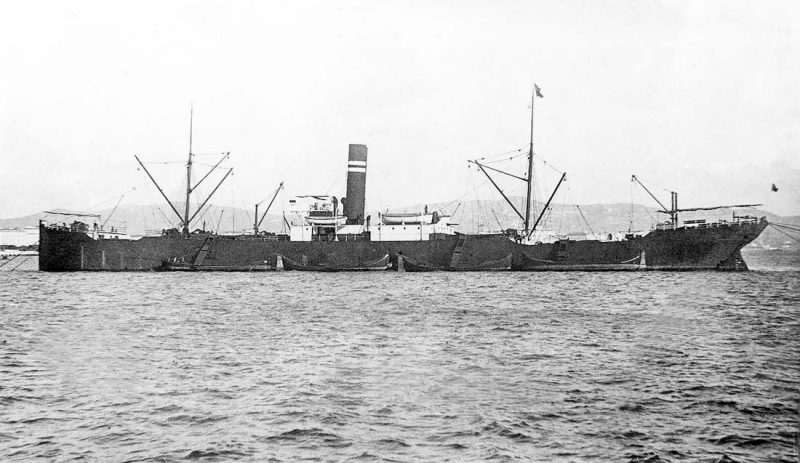
The 3,840grt Llanover was built in 1899 by Richardson Duck at Thornaby. In 1913 she was renamed Paddington then in 1916 the company renamed her Iolo. On 17th February 1917 she was torpedoed and sunk by U-60 SW of Fastnet while on a voyage from Cardiff to La Spezia with a cargo of coal. Two crew members were killed. (John B. Hill collection)
Much of the capital for the rapid expansion of the company had been raised in rural Wales and the ease of obtaining it was a major part of this success. The brother-in-law of Evan, Jenkin David, was a bank manager in Dolgellau and he directed many his customers to invest in the tramps. Rev. J. Cynddylan Jones showed considerable commercial enterprise by being paid 2% of the profits of each tramp in return for persuading members of his congregation to invest!
The company went from strength to strength under Radcliffe control and by the turn of the century had 24 tramps, drawing heavily for crews on the coastal villages of Cardigan Bay. The preferred builder was Ropner of Stockton after Daniel had placed his first order with Turnbull of Whitby out of gratitude to his old employer. Ropner built many tramps for South Wales owners such as William Seager, W.J. Tatem, J.E. Morel, W. Leon and others and these men became directors of the builders. After the turn of the century allegiance switched to Richardson, Duck & Co. Ltd of Stockton for the larger tramps Washington, Patagonia, Picton, of 8,000 dwt of 1906/07. There were three even larger 9,000 dwt tramps from Craig, Taylor & Co. of Stockton between 1911/13 – Wimborne, Windsor and Patagonia. The pattern of trading in the first decade of the century was nearly all ‘eternal triangle’ trading as shown by some voyages between 1906/9:-
Patagonia
- 11.7.1906 Cardiff (coal), Ancona, Odessa (grain), Rotterdam, Barry
- 6.10.1906 Barry (coal), Port Said, Odessa (grain), Hamburg, Cardiff
- 10.1.1907 Cardiff (coal), Port Said, Theodosia & Novorossisk (grain), Hamburg, Barry
- 13.4.1907 Barry (coal), Port Said, Odessa (grain), Nicolaieff (grain), Hamburg, Barry
- 19.7.1907 Barry (coal), Port Said, Odessa (grain), Rotterdam, Barry
- 26.10.1907 Barry (coal), Trieste, Barry
- 19.12.1907 Barry (coal), Port Said, Barry
Llangorse
- 30.9.1907 Barry (coal), Port Said, Odessa & Kherson (grain), Rotterdam
- 8.1.1908 Cardiff (coal), Port Said, Barry
- 6.3.1908 Barry (coal), Port Said, Odessa (grain), Antwerp, Cardiff
- 18.6.1908 Cardiff (coal), Venice, Nicolaieff & Odessa (grain), Rotterdam, Barry
- 11.11.1908 Barry (coal), Port Said, Novorossisk (grain), Rotterdam, Cardiff
- 3.2.1909 Cardiff (coal), Ancona, Nicolaieff (grain), Hamburg, Barry
- 4.6.1909 Barry (coal), Port Said, Barry


This pattern of trading was repeated with little variation for all Radcliffe tramps until 1912/13 when grain rates homeward from the Black Sea fell off considerably. Gradually this lucrative trade fell away, and was replaced by longer runs to the Gulf of Mexico, Brazil and the Plate which were more suitable for the bigger tramps with their larger bunker capacity. All tramps had full cargoes of Welsh steam coal or Durham household coal out, and coal shipments reached a peak in the years before WWI. At the outbreak the company owned 28 tramps and were the largest Cardiff tramp owner of the time, but 19 of these were to be lost to submarines:-
- 15.9.1915 – Patagonia (1913) 10 miles NE of Odessa
- 21.10.1915 – Windsor (1911) 70 miles SW of Lizard
- 23.7.1916 – Badminton (1899) ex Swindon 63 m NNE of Cape Carbon
- 8.9.1916 – Llangorse (1900) 48 miles WSW of Cape Matapan
- 11.10.1916 – Iolo (1898) ex Paddington 153 m N of Vado, Norway
- 11.11.1916 – Sarah Radcliffe (1896) ex Dunraven 170 m SW of Ushant
- 18.12.1916 – Flimston (1916) 21 miles ENE of Ushant
- 17.2.1917 – Iolo (1899) ex Llandover, Paddington 42 m SW of Fastnet
- 3.5.1917 – Washington (1907) Rapallo Bay, Genoa
- 18.5.1917 – Llandrindod (1900) 165 m WNW of Fastnet
- 21.7.1917 – Paddington (1906) ex Patagonia 250 m W of Fastnet
- 1.8.1917 – Llandudno (1910) Porquerolles Island, Gulf of Lyons
- 8.8.1917 – Llanishen (1901) 8 m NE of Cape de Creus, Gulf of Lyons
- 10.8.1917 – Dunraven (1910} Bay of Biscay as ‘Q’ ship
- 28.10.1917 – Euston (1910) 35 miles SW of Cape Matapan
- 28.11.1917 – Jane Radcliffe (1897) ex Windsor in Aegean Sea
- 6.5.1918 – Llancarvan (1904) ex W.I. Radcliffe 370 miles NE of San Miguel, Azores
- 11.10.1918 – Penistone (1913) 145 miles SSW of Nantucket
- 17.10.1918 – Bonvilston (1893) ex Anthony Radcliffe 9 miles Corsewall Point
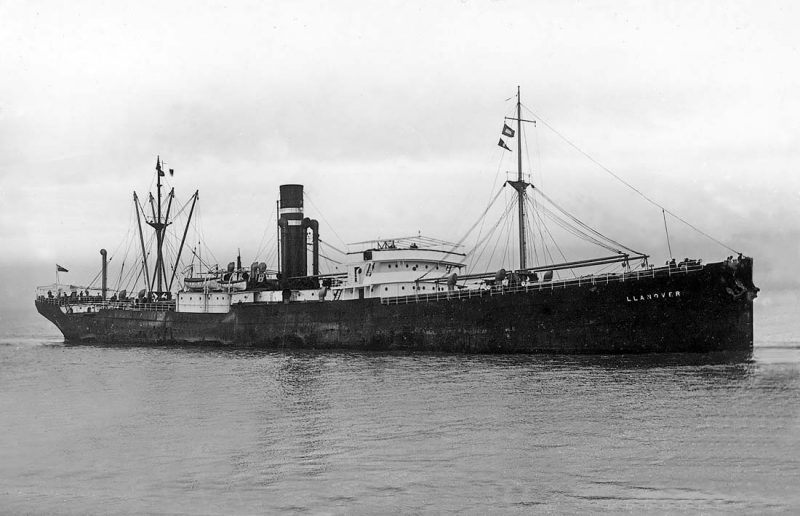
The company was left with 9 tramps but unlike some other owners Radcliffes refrained from entering the very expensive second-hand market in the immediate post-war boom and only one tramp, Ethel Radcliffe, was built. This proved to be the correct policy as half of Cardiff tramp owners went out of business between 1920/22 during the inevitable slump. Ethel Radcliffe cost the enormous sum of £274,019 from Craig, Taylor & Co. Ltd., Stockton and she sailed on her maiden voyage under Capt. Mathias at the end of 1920:-
Ethel Radcliffe
- 11.12.1920 – Barry (coal), Port Said, Mauritius (sugar), London
- 4.6.1921 – London, Norfolk (Va) (coal), Immingham
- 16.8.1921 – Immingham, Texas City (wheat), Antwerp, Cardiff
- 28.10.1921 – Cardiff (coal), Port Said, Cardiff
- 9.12.1921 – Cardiff (coal), Port Said, Baltimore (wheat), Hamburg
- 29.3.1922 – Cardiff (coal), Port Said, Buenos Aires (wheat), Hamburg
- 31.8.1922 – Cardiff (coal), Portland (Me), Galveston (wheat), Genoa, Bahia Blanca (wheat), Genoa, Cardiff
- 22.3.1923 – Cardiff (coal), Hamburg, Barry
- 5.5.1923 – Barry (coal), Port Said, Karachi (grain), Bombay (general), Leith, Antwerp
- 8.9.1923 – Barry (coal), Rio de Janeiro (ore), Baltimore, Norfolk (Va) (grain), Genoa, Bahia Blanca (grain), London, Barry
- 18.4.1924 – Barry (coal), Santos, Rosario (grain), Buenos Aires (grain), Belfast
- 7.11.1924 – Belfast, Galveston (wheat), Genoa, Barry
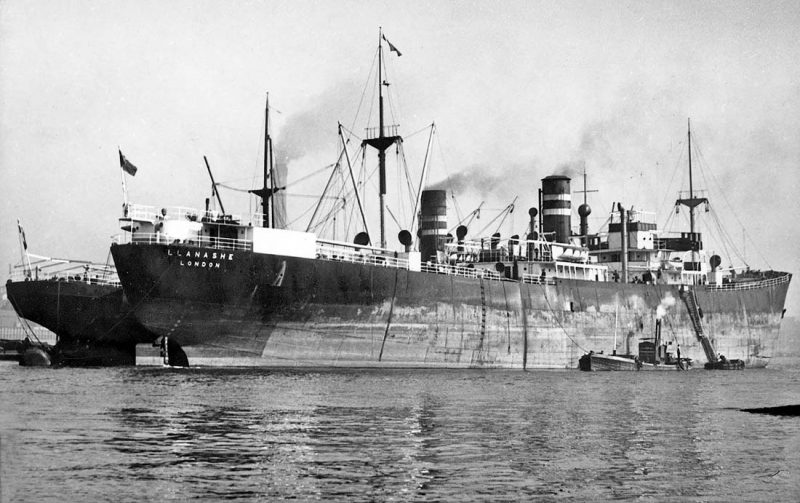
The company invested their money until the time was right with freight rates back to more usual levels, and four fine tramps joined the fleet in 1925. Two of the quartet, Vera Radcliffe and Catherine Radcliffe, were named after the daughters of Daniel Radcliffe and cost, £100,000 each, while Peterston and Flimston from Bartrams cost £84,250 each compared to the astronomic price of Ethel Radcliffe five years earlier. The four tramps all made losses on their maiden voyages but gradually moved into profit, and orders for six more similar tramps were placed with Bartram and two with Hawthorn, Leslie. Remuneration was hardly much better for the first five voyages of the 1928 octet:-
Llanberis
- Tyne (coal), Algiers, Rosario (grain), Buenos Aires (grain), London
- Newport (coal), Alexandria, Marmagoa (general), Hamburg, Tyne
- Tyne (coal), Bona, Barry
- Barry (coal), La Plata, Rosario, Buenos Aires (grain), Dunkirk, Hamburg
- Tyne (coal), Port Said, Madras Coast (groundnut), Rotterdam, Bremen
Llandilo
- Tyne (coal), Algiers, Rosario (grain), San Nicolas (grain), La Plata
- Hartlepool( coal), Leghorn, Cuba (sugar), London
- Cardiff (coal), Port Said, Geelong, Milazzo (wheat), Birkenhead
- Newport (coal), Alexandria, Newport
- Newport (coal), Alexandria, Newport
Llanfair
- Tyne (coal), Port Said, Cuba (sugar), Liverpool,Newport.
- Newport (coal), Alexandria, Java (sugar), Alexandria, Marmagoa (ore), Hamburg, Antwerp, Cardiff.
- Cardiff (coal), Port Said, Newport
- Newport (coal), Alexandria, Newport
- Newport (coal), Alexandria, Barry
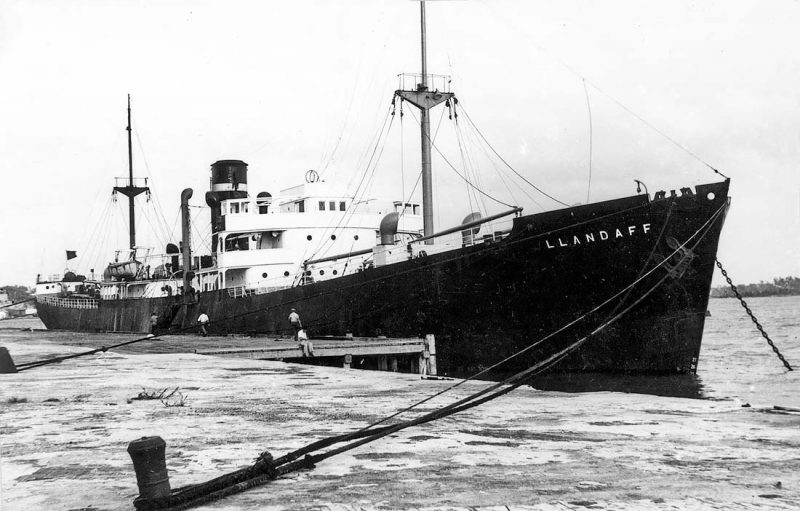
Llangollen
- Tyne (coal), Port Said, Karachi (grain, eeds), Rotterdam, Bremen
- Newport (coal), Alexandria, Rosario (grain), Buenos Aires, Hull
- Tyne (coal), Algiers, Galveston (wheat, barley), Le Havre, Brake
- Cardiff (coal), Port Said, Madras Coast (groundnut), Bremen
- Newport (coal), Alexandria, Newport
Llanover
- Sunderland (coal), Savona, Rosario (grain), La Plata, Rotterdam
- Newport (coal), Alexandria, Rosario (grain), Buenos Aires, London
- Cardiff (coal), Buenos Aires (grain), Avonmouth, London
- Barry (coal), Rio de Janeiro, Bahia Blanca (wheat), Hamburg, Tyne
- Tyne (coal), Port Said, Rosario (grain), Buenos Aires, London
Llanwern
- Tyne (coal, firebricks), Santos,Rosario (grain), Buenos Aires, Avonmouth
- Cardiff (coal), Rio de Janeiro, Bahia Blanca (wheat), Hamburg
- Barry (coal), Rio de Janeiro, Villa Constitucion (grain), Buenos Aires (grain), London
- Barry (coal), Rio de Janeiro, Barry
- Barry (coal), Buenos Aires, Villa Constitucion (grain), Buenos Aires (grain), Avonmouth
Llanarth
- Tyne (coal), Oran, San Lorenzo (grain), Buenos Aires, Rotterdam
- Newport (coal), Alexandria, Barry
- Barry (coal), Montevideo, Rosario (grain), Buenos Aires, London
- Barry (coal), Leghorn, Cardiff
- Cardiff (coal), Buenos Aires, Bahia Blanca (grain), Antwerp
Llanishen
- Tyne (coal), Santos, San Lorenzo (grain), La Plata (grain), London
- Barry (coal), Rio de Janeiro, Cardiff
- Cardiff (coal), Montevideo, Barry
- Barry (coal), Port Said, Kherson & Nicolaieff (barley), Emden
- Tyne (coal), Rosario (grain), Buenos Aires (grain), Avonmouth
At the start of the depression the fleet numbered 16 tramps of which the majority were laid-up for considerable periods. In 1930/31 W.I. Radcliffe was laid-up for a total of 270 days at Newport, Clarissa Radcliffe for 370 days at Barry and Vera Radcliffe for 375 days at Cardiff. Even the new 1928 octet were idle and all spent extensive periods of lay-up at Cardiff and Barry. The voyages of Peterston at the height of the depression were typical:-
Peterston
10.10.1932 Cardiff (coal), Marseilles, Istanbul, Constantza (grain), Rotterdam, Tyne (coal), Savona, Istanbul, Constantza (grain), Algiers, Hamburg, Cardiff (coal), Havana, Nuevitas (sugar), London, Barry, Laid-up
26.9.1933 Barry (coal), Genoa, Istanbul, Nicolaieff (grain), Ceuta, Hull, Sunderland (coal), Algiers, Colombo, Vizagapatnam (oil cake), Coconada (groundnut), Port Said, Algiers (bunkers), Liverpool, Rotterdam (dry-dock), Immingham

However by 1935 all the tramps were moving again, but Catherine Radcliffe was wrecked in February off Japan and the fleet was reduced to 13 tramps by the sale of Wimborne and W.I. Radcliffe to Dutch and Greek owners respectively. Orders were then placed for two tramps from Bartrams at a cost of £80,000 each and they were delivered as Llanashe and Llandaff in November 1936 and May1937. The new tramps made good profits up to 1939:-
Llandaff
- Tyne (coal), Port Said, Poti, Baltimore (time-charter)
- Huelva, Baltimore, Montreal, Cape Town, Assumption lsland, Auckland, Barry
- Barry (coal), Alexandria, Fremantle, Brisbane, London
Llanashe
- Tyne (coal), Gibraltar, Buenos Aires, San Lorenzo (grain), Rosario (grain), Avonmouth
- Cardiff, Panama, British Columbia (timber), Sydney NSW, Port Kembla, Geelong (wheat), Durban (bunkers), Las Palmas (bunkers), London, Hull (dry-dock)
- Hull, Archangel (timber), Tyne (bunkers), Port Elizabeth, Lourenco Marques (coal), Cape Town, Durban (coal), Cape Town, Durban (coal), Cape Town, Durban (coal), Cape Town, Lourenco Marques (coal), Sabang, Hong Kong, Suva (sugar), Lautuka (sugar), Panama (bunkers), Jamaica (bunkers), London, Blyth
The big old six-hold 9,000 dwt tramp Ethel Radcliffe made a long slow passage out to the Far East and Australia and back at an average speed of 5.8 knots in 1938. Her old style navigating bridge without wheelhouse or wing shelter gave no protection to the helmsman and officers, and when they came off watch there were no steam heaters in the cabins, just coal-burning stoves. Her route was:-
6.1938 Barry (coal), Port Said, Aden (salt), Japan, Port Kembla (concentrates), Fremantle (bunkers), Durban (bunkers), Cape Town (bunkers), Freetown, Antwerp
At the outbreak of WWII the company had 15 tramps of which 10 were to be lost by enemy action:-
- 27.6.1940 – Llanarth – Torpedoed/sunk off Lands End
- 11.8.1940 – Llanfair – Torpedoed/sunk off N.W. Ireland
- 23.8.1940 – Llanishen – Bombed/sunk to SE of Wick
- 26.2.1941 – Llanwern – Bombed/sunk off SW coast of Ireland
- 17.4.1941 – Ethel Radcliffe – Torpedoed by E-boat off Norfolk
- 12.5.1942 – Llanover – Torpedoed/sunk in N. Atlantic
- 2.11.1942 – Llandilo – Torpedoed/sunk S of St. Helena
- 17.2.1943 – Llanashe – Torpedoed/sunk off Port Elizabeth
- 10.3.1943 – Clarissa Radcliffe – Torpedoed/ sunk 600 m E of New York
- 30.5.1943 – Llancarfan – Bombed/sunk 2 miles S of St. Vincent
- 30.6.1944 – Vera Radcliffe – Sunk as a blockship at Normandy
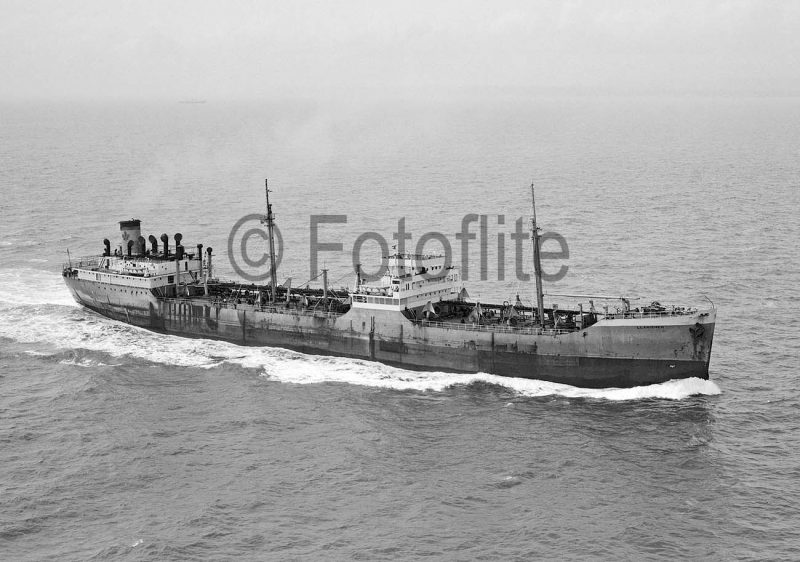
Llanarth was carrying 7,980 tons of flour from Melbourne for Leith and Aberdeen, having sailed from Freetown on 12th June 1940 unescorted under Capt. Parry and had traversed far out into the Atlantic. Zig-zagging by day and in bright moonlight she was 270 miles from Lands End on 27th June. At 2200 hours zig-zagging was discontinued and Capt. Parry left the bridge for an hour returning at 2300 hours to check that all was well and he stayed for two hours before going below. A few minutes later he was thrown from his bunk by the force of a torpedo explosion in no. 5 hold but picked himself up and put the Admiralty confidential papers into a weighted bag and dumped them overboard. On deck the whole stern was in flames with a list to port and she was beginning to settle by the stern. Fire-fighting parties were organised but shortly after starting all water pressure was lost and the order to abandon ship was given, with Llanarth sinking 45 minutes after the torpedo had struck.
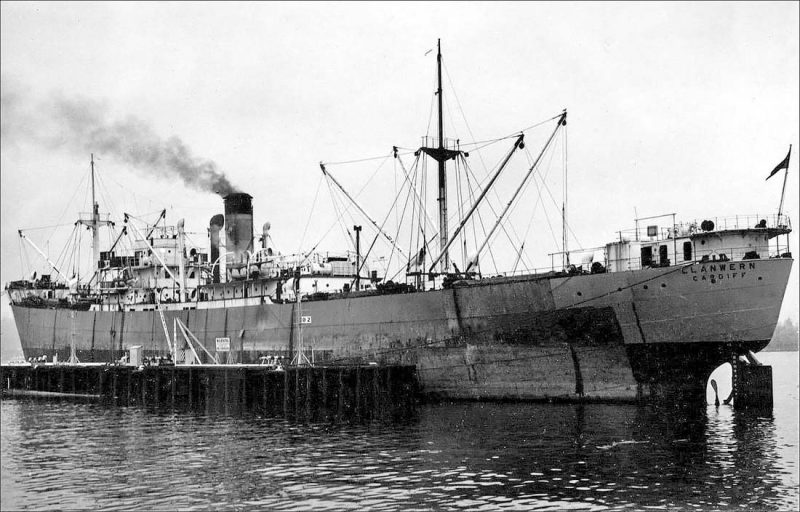
Ethel Radcliffe was seriously damaged by E-boat off the Norfolk coast on 17th April 1941 and then was bombed in port at Great Yarmouth and was a total loss.
Llanover sailed with South Wales steam coal in convoy ONS92 of 41 ships for Halifax in May 1942 but was hit by a torpedo on 12th May. Distress rockets were sent up and the rescue ship Bury pulled all 45 crew from the sea, demonstrating the enormous physical and psychological value of rescue ships.
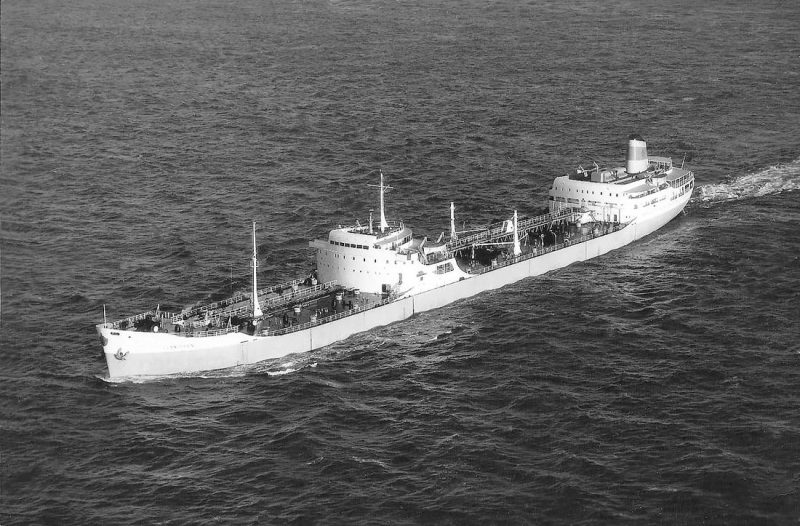
Clarissa Radcliffe had sailed under Capt. Finnes in convoy SC122 from New York on 5th March 1943 in company with 50 other ships with a cargo of iron ore. All the convoy became scattered during a force 10 gale encountered 36 hours out. She soon fell astern and lost all contact with the convoy and two days later was sighted by a Canadian corvette which advised Capt. Finnes that he was only 15 miles astern of the convoy. Black smoke poured from her funnel as her elderly 1919 engines laboured valiantly to rejoin but she never did. She was probably torpedoed by U633 on 18th March.
The company had purchased Biddlestone in 1940 from the White Shipping Co. Ltd. of Newcastle and renamed her Llancarvan. She sailed from Lisbon at the end of May 1943 with coal and coke from Glasgow for Gibraltar but was bombed and sunk by aircraft 2 miles south of Cape St. Vincent on 30th May.
Llandaff was damaged on a Russian convoy when she was bombed 20 miles NE of Kildin Island at the entrance to the Kola Inlet on 24th July1943.
Finally the 20 year old Vera Radcliffe was sunk as a blockship at Normandy 30th June 1944. The company had also managed six Canadian-built ‘Parks’ and a ‘Liberty’ for the Ministry of War Transport.
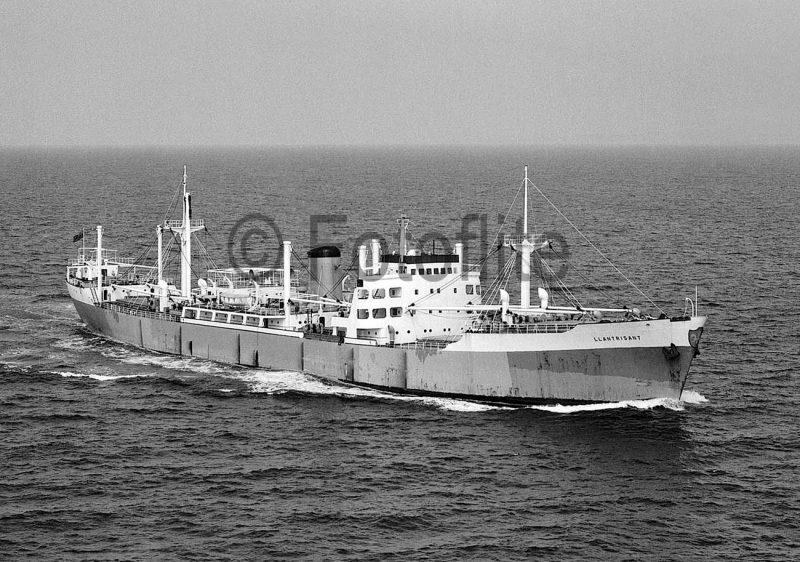
The company was left with 5 survivors, Llanberis and Llangollen of 1928 Peterston and Flimston of 1925 and Llandaff of 1937. The 1925 pair were sold to British owners in 1948, the first pair were sold to Greece in 1950, and Llandaff was ironically sold to Germany in 1951. War-built tonnage was taken on bare-boat charter and wore the changed funnel colours of bright yellow and blue with a yellow crest and black top. A T2 tanker was purchased at the end of 1947 and renamed Llanishen and a ‘Liberty’ was purchased and renamed Llanover.
Nailsea Moor joined the Radcliffe fleet from Evans & Reid, Cardiff on 25th May 1949 when Radcliffes were taken over by Evans & Reid after some years in partnership with them. She was renamed Llanwern and was a pre-war survivor of a large fleet. She was kept for two years before being sold ironically to Japan.

The new 9,000 dwt tramp Llantrisant was the first new post WWII company tramp when delivered by Bartram in September 1952 and she tramped world-wide for the next five years making nine voyages before being sold to Australian owners. She was replaced by a new tramp of the same name from Bartram in December 1957. This Llantrisant tramped worldwide for 10 years before being sold. The company then became more involved in the tanker market although a third new dry-cargo tramp Llanwern was delivered by Bartram in 1962. She was the last dry-cargo tramp to be owned by the company and was sold to Greeks in 1968. The last oil-tankers were sold for scrap at Kaohsiung in 1976 and a lone chemical carrier carried on until sold in 1981. Two small coasters were purchased but were not a success, and having seen the company through its centenary in 1982 were sold off and the company wound up.


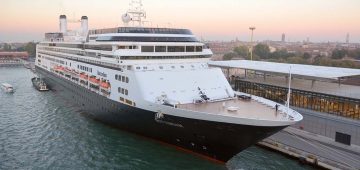



Comments
Sorry, comments are closed for this item